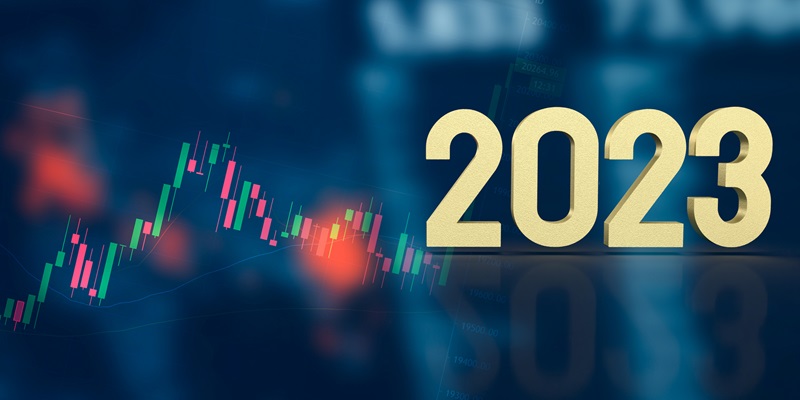Stephen’s note: I’m on my way to London right now to meet bestselling author and one of my heroes, Matt Ridley. His book, The Rational Optimist, changed my life.
Today, Dan and Chris continue their conversation on Project 5X’s 2023 performance, and Dan gives Chris a final grade...
***
Dan Steinhart: Chris, we left off talking about the cyclicity of microcaps. They’ve been deeply out of favor since late 2021. Put that into context for us.
Chris Wood: Microcaps tend to go through an exaggerated version of the cycles the overall stock market goes through. We control for this in Project 5X with our expected holding period. We intend to hold each stock for a minimum of three years, up to five years.
Aside from the cyclicality, it takes time for these early stage companies to execute on their visions. As legendary investor Warren Buffett says, “No matter how great the talent or efforts, some things just take time. You can’t produce a baby in one month by getting nine women pregnant.”
Patience and conviction are key.
Dan: I’m thinking back to the last time we had a conversation like this: March 2020, COVID crash. The Project 5X portfolio, along with global markets, were deep red. The Nasdaq crashed 12% in one day, and we had to have some difficult conversations about what to do next. I was concerned about some of the paper losses in the Project 5X portfolio, but your conviction never wavered.
Chris: We were down 57% on Magnite (MGNI) in early April 2020, for example. We stuck to our guns because the company was executing as expected. The stock price just made no sense.
Other investors finally caught on, and Magnite soared more than 1,400% over the next 10 months. We closed out Magnite for a 422% gain.
With micro display tech company Kopin (KOPN), we were down big at one point. But the company was making great progress advancing its tech and securing record orders. The stock soared more than 5,600% over the next 11 months. And we closed it out for a 399% gain.
So we’ve been in a similar situation before. This cycle is taking a lot longer, but I believe we’ll have a similar result.
Keep in mind, because of their small size, microcaps can grow in ways that are simply impossible for larger companies. But to tap into this profit potential, you must be willing to take a roller coaster ride sometimes.
That's the key to successful microcap investing. Sticking to your guns when you know you’re right and being able to hold paper losses. Most folks lose because they sell at exactly the wrong time. And right now is exactly the wrong time to give up.
Dan: Strategically, how should investors confront the volatility of microcaps?
Chris: For starters, never invest more than you can afford to lose. Because of their highly asymmetric risk profile, you only need to risk a little in microcaps to potentially make a lot.
Also, never over-allocate to one stock. It’s hard not to fall in love with some of these microcaps. What they’re doing is often extremely compelling and innovative. But you never want too many eggs in one basket.
Microcaps should only make up 5%–10% of your overall investment portfolio at most, and probably closer to 5%.
Finally, take profits when they’re available.
In Project 5X, we take free rides (meaning we sell our initial stake) after our stocks have risen 100% to 200%. Getting your initial investment back makes it easier to stomach volatility.
Dan: Okay, let’s get back to portfolio specifics over the past year. What mistakes did you make?
Chris: By far my biggest mistake was underestimating how deep and how long this bear market could be. Big microcap downturns typically last about a year. But we’re about 2.5 years into this one.
Things have improved marginally since November. But we haven’t seen anything close to a prolonged rally in microcaps since early 2021.
So I could have been a less-aggressive buyer. And I should have required a longer cash runway for potential picks. We talked earlier about how microcaps are highly sensitive to the liquidity conditions of financial markets. They tend to not have a lot of cash, and they rarely generate cash in excess of their operating expenses.
I always scrutinize a company’s cash position when investing. And I typically require at least a year’s worth of cash on the balance sheet before making a recommendation.
But one year’s worth of cash hasn’t been enough in this environment. I’m seeing many promising microcaps run out of cash, which is a real shame. And with deeply depressed stock valuations, they have no way to raise money at anything approaching attractive terms.
I think the investors who swoop in and buy these up for pennies on the dollar will make a killing eventually.
Dan: Any other comments?
Chris: The prices of many of the stocks in our portfolio simply don’t make any sense right now. But the market will catch on eventually. We’re holding, and I’m continuing to add game-changing companies at these bargain prices, like the one I recommended last Wednesday. It’s developing a new patented medical device to treat the root cause of CVI, a disease that occurs when valves in the veins of the leg stop working.
Dan: Chris, thanks for being straightforward and transparent.
I understand the cyclical nature of microcaps and the need for a longer-term, patient approach, because they go through multi-year cycles. A grade for a single year might not capture all you’ve done for subscribers.
Still… that’s how annual performance reviews work. If we had reviewed Project 5X publicly in 2020 or 2021, for example, it would’ve earned an A for producing returns of 129% and 52%. For 2023, your grade is a D. Here’s to doing a lot better in 2024.
Chris: Thanks. I think we’ll be having a very different conversation next year.




